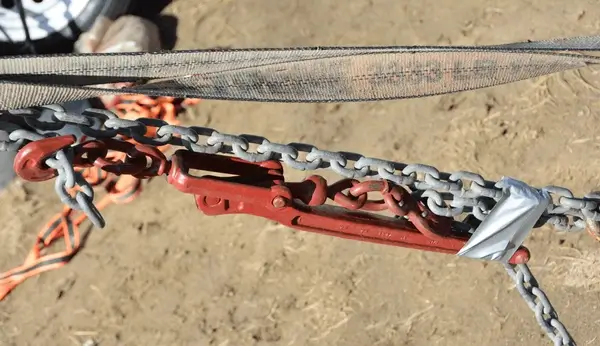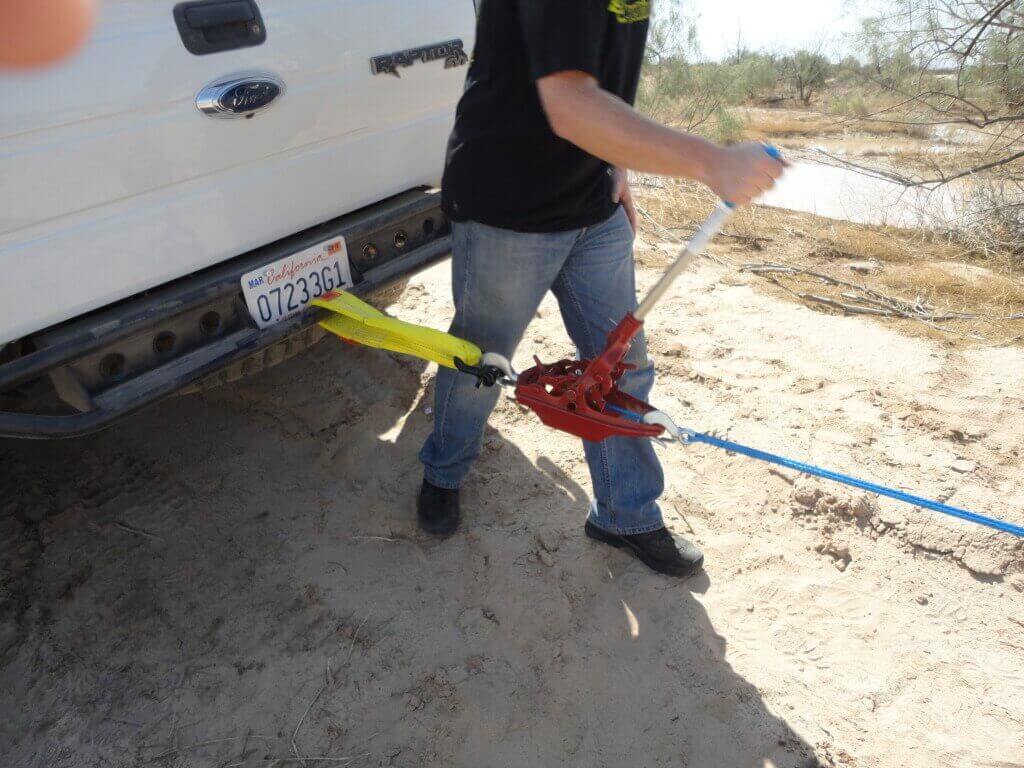As a beginner, operating a come along winch for the first time can seem daunting.
But have no fear! With some basic guidance on choosing the right winch, setting it up securely, operating it step-by-step, and caring for it after use, you’ll be leveraging these hand-powered workhorses like a pro in no time.
Selecting the Right Come Along Winch
Before you can put your winch to work, you need to select the right one for the job. Consider the following:
Load Capacity – Come along winches have rated capacities ranging from 1 ton to 20+ tons. Think about the heaviest object you need to move, then choose your capacity with a safety buffer. Overloading can damage the winch or your load.
Type – Ratchet come alongs use jaw-like grabs that bite the cable to move loads. Faster cable models just wind the line instead. Each has advantages depending on use.
Features – Nice extras like dual gear ratios for speed/power, auto-stop pawls to prevent handle backlash, and folding handles make operation more convenient.
Once you determine needed capacity, type, and features, you can select the ideal come along winch for your work. Now let’s look at how to set it up.
Setting Up Your Come Along Winch

Setting up your perfect come along winch involves a couple of crucial steps to ensure everything works smoothly and safely. Here’s a deeper dive into each step:
1. Choosing a Solid Anchor Point
The first step in setting up your come along winch is to select an anchor point.
This point must be incredibly stable and capable of supporting the load you intend to move, plus the additional force applied by the winch.
The anchor could be a sturdy tree, a large post cemented into the ground, or a solid beam on a building structure.
The key here is to ensure that the anchor point is immovable under the load stress to prevent any accidents or failures during the winching process.
2. Connecting Your Winch Using Rigging Straps or Chains
Once you have your anchor point, the next step is to connect your winch to it. This is usually done using rigging straps or chains.
These are not just any straps or chains but ones specifically designed to handle high tension and stress. Here’s why and how to attach them properly:
- Distribute Weight Evenly: The straps or chains you use play a critical role in evenly distributing the load’s weight. This even distribution is crucial because it prevents any single point from bearing too much stress, which could lead to material failure and potentially dangerous situations.
- Prevent Damage: Proper attachment of the rigging straps or chains also helps in preventing damage to the load, the winch, and the anchor point. By ensuring that the load is securely and evenly attached, you minimize the risk of the load shifting unexpectedly or the straps/chains cutting into or damaging the load or anchor point.
- Ensure Load Stability: Making sure your load is snug and secure helps keep everything balanced. An unbalanced load can shift during winching, creating uneven forces that could destabilize the setup. Balancing the load properly ensures that the force applied by the winch is directly and efficiently used to move the load, rather than correcting for shifts or imbalances.
3. Attachment Techniques
When attaching the rigging, make sure to follow best practices:
- Use the Right Equipment: Ensure the straps or chains are rated for the load you’re moving. Using under-rated equipment is dangerous and can lead to failure.
- Check for Wear and Tear: Inspect your rigging equipment for any signs of wear, tear, or damage before use. Even minor damage can significantly reduce the strength of straps or chains.
- Securely Fasten: Make sure all connections are securely fastened. Use appropriate hooks, shackles, and tighteners designed for winching purposes. Improper fastening can lead to slippage or complete detachment under load.
Operating Your Come Along Winch Safely

Operating a come along winch safely is essential to ensure that the task at hand is completed efficiently without causing injury to yourself or damage to the objects you are moving.
Double Checking the Setup
Before you begin to use the winch, it’s crucial to perform a comprehensive check of your setup. This means:
- Ensuring that the anchor point remains secure and capable of handling the load.
- Verifying that the winch is correctly attached to both the load and the anchor point.
- Inspecting the cable or chain for any signs of wear, damage, or kinks that could compromise the operation.
This step is about making sure that every part of your setup is as it should be, minimizing the risk of something going wrong mid-operation.
Operating the Winch with Caution
Once you start using the come along winch, the key is to move slowly and deliberately. Here’s why:
- Avoid Jerking: Applying force too quickly or jerking the handle can cause sudden shifts in tension. These shifts can destabilize the load or cause the winch, cable, or load to fail. A steady, controlled pull ensures that the force is applied evenly, making the winching process smoother and safer.
- Maintain Steady Progress: By moving slowly, you can better monitor the progress of the load movement. It allows you to spot any issues early before they become problematic, such as the load snagging or the cable tension becoming uneven.
Monitoring Tension
Paying attention to the tension in the cable or chain throughout the operation is crucial. Too much tension can lead to cable or chain breakage, while too little might mean the load isn’t secured tightly enough. Here’s how to manage it:
- Stop Before Over Tensioning: If you feel the tension is getting too high, or if the winch becomes difficult to operate, it’s time to stop and reassess. This might involve reevaluating the load’s weight, the setup, or even the winch’s capacity to handle the task.
- Adjust as Necessary: Sometimes, you might need to adjust your setup. This could mean repositioning the anchor point, the load, or even taking some weight off the load if possible.
Releasing Tension Slowly
When you’ve completed the task, or if you need to adjust the setup, releasing the tension on the cable or chain slowly is just as important as applying it:
- Controlled Release: A slow, controlled release prevents the load from moving too quickly or dropping suddenly, which could cause damage or injury.
- Steady Hand: Just like when applying tension, keep your hand steady and avoid jerking the release mechanism. This ensures that you maintain control over the load as the tension is released.
Caring for Your Come Along Winch
Like any equipment, some basic care goes a long way for longevity and performance:
- Inspect for Damage After Use – Check cables, gears and parts for wear after each use. Schedule service for any issues.
- Lubricate Properly – Keep gears, pulleys and ratchet mechanisms oiled. Lightly lubricate cable drums to prevent corrosion.
- Clean and Store Indoors – Use a cloth to remove dirt and moisture, then store your winch in a clean, dry location to prevent rust.
Following this preventative maintenance routine lets you operate worry-free and extend the working life of quality come along winches significantly.
Conclusion
In summary, come along winches grant regular folks super strength for pulling, lifting, dragging and straightening all kinds of heavy objects.
By selecting the right winch for your loads, setting up rigging properly, operating the winch slowly and deliberately, and caring for it after use, you can utilize these tools safely and effectively.
So next time you need to move that 500lb engine block, straighten that fence post, or winch up that fallen tree limb – just grab your come along! The power is literally in your hands.

